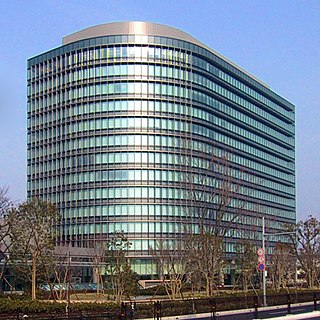
Toyota Motor Corporation is a Japanese multinational automotive manufacturer headquartered in Toyota, Aichi, Japan. It was founded by Kiichiro Toyoda and incorporated on August 28, 1937. In 2017, Toyota's corporate structure consisted of 364,445 employees worldwide and, as of December 2019, was the tenth-largest company in the world by revenue. Toyota is the largest automobile manufacturer in Japan, and the second-largest in the world behind Volkswagen, based on 2018 unit sales. Toyota was the world's first automobile manufacturer to produce more than 10 million vehicles per year, which it has done since 2012, when it also reported the production of its 200 millionth vehicle. As of July 2014, Toyota was the largest listed company in Japan by market capitalization and by revenue.

Jasmine is a genus of shrubs and vines in the olive family (Oleaceae). It contains around 200 species native to tropical and warm temperate regions of Eurasia and Oceania. Jasmines are widely cultivated for the characteristic fragrance of their flowers. A number of unrelated plants contain the word "jasmine" in their common names.

The Toyota Prius is a full hybrid electric automobile developed and manufactured by Toyota since 1997. Initially offered as a 4-door sedan, it has been produced only as a 5-door fastback hatchback since 2003.

Salvia officinalis is a perennial, evergreen subshrub, with woody stems, grayish leaves, and blue to purplish flowers. It is a member of the mint family Lamiaceae and native to the Mediterranean region, though it has been naturalized in many places throughout the world. It has a long history of medicinal and culinary use, and in modern times it has been used as an ornamental garden plant. The common name "sage" is also used for a number of related and unrelated species.
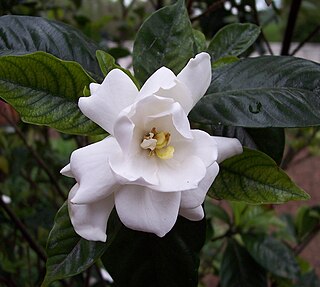
Gardenia is a genus of flowering plants in the coffee family, Rubiaceae, native to the tropical and subtropical regions of Africa, Asia, Madagascar and Pacific Islands, and Australia.
New United Motor Manufacturing, Inc. (NUMMI) was an automobile manufacturing company in Fremont, California, jointly owned by General Motors and Toyota that opened in 1984 and closed in 2010.
Hybrid Synergy Drive (HSD), also known as Toyota Hybrid System II, is the brand name of Toyota Motor Corporation for the hybrid car drive train technology used in vehicles with the Toyota and Lexus marques. First introduced on the Prius, the technology is an option on several other Toyota and Lexus vehicles and has been adapted for the electric drive system of the hydrogen-powered Mirai, and for a plug-in hybrid version of the Prius. Previously, Toyota also licensed its HSD technology to Nissan for use in its Nissan Altima Hybrid. Its parts supplier Aisin Seiki Co. offers similar hybrid transmissions to other car companies.
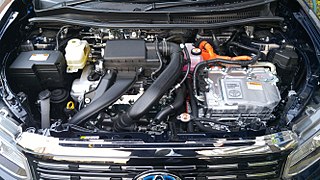
The Toyota NZ engine family is a straight-4 piston engine series. The 1NZ series uses aluminum engine blocks and DOHC cylinder heads. It also uses sequential fuel injection, and has 4 valves per cylinder with VVT-i.
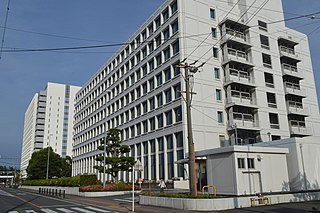
Aisin Seiki Co., Ltd., also known as Aisin, is a Japanese corporation that develops and produces components and systems for the automotive industry. Aisin is a Fortune Global 500 company, ranked 329 on the 2018 rankings. Aisin is 51% owned by the Toyota Group of companies.

A hybrid electric vehicle (HEV) is a type of hybrid vehicle that combines a conventional internal combustion engine (ICE) system with an electric propulsion system. The presence of the electric powertrain is intended to achieve either better fuel economy than a conventional vehicle or better performance. There is a variety of HEV types and the degree to which each function as an electric vehicle (EV) also varies. The most common form of HEV is the hybrid electric car, although hybrid electric trucks and buses also exist.
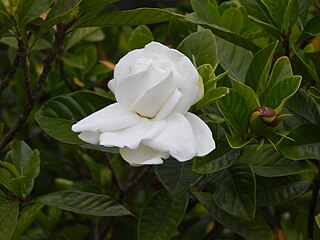
Gardenia jasminoides, commonly known as gardenia, is an evergreen flowering plant of the coffee family Rubiaceae. It originated in Asia and is most commonly found growing wild in Vietnam, Southern China, Korea, Taiwan, Japan, Myanmar, India and Bangladesh. Wild plants range from 30 cm to 3 m high and have a rounded habit with very dense branches with opposite leaves, lanceolate-oblong, leathery or gathered in groups on the same node and by a dark green, shiny and slightly waxy surface and prominent veins.

Salvia is the largest genus of plants in the mint family, Lamiaceae, with nearly 1000 species of shrubs, herbaceous perennials, and annuals. Within the Lamiaceae, Salvia is part of the tribe Mentheae within the subfamily Nepetoideae. One of several genera commonly referred to as sage, it includes the widely produced herb used in cooking, Salvia officinalis.

The history of Toyota started in 1933 with the company being a division of Toyoda Automatic Loom Works devoted to the production of cars under the direction of the founder's son, Kiichiro Toyoda. Kiichiro Toyoda had traveled to Europe and the United States in 1929 to investigate automobile production and had begun researching gasoline-powered engines in 1930. Toyoda Automatic Loom Works was encouraged to develop automobile production by the Japanese government, which needed domestic vehicle production, due to the war with China. Kiichiro Toyoda seized this opportunity to establish the Automotive Production Division on September 1, 1933, and began preparing to build prototype vehicles. In 1934, the division produced its first Type A Engine, which was used in the first Model A1 passenger car in May 1935 and the G1 truck in August 1935. Production of the Model AA passenger car started in 1936. Early vehicles bear a striking resemblance to the Dodge Power Wagon and 1930's Chevrolet, with some parts actually interchanging with their American originals.

The Toyota Prius Plug-in Hybrid, also known as Prius PHV and Prius Prime (U.S.) since 2016, is a plug-in hybrid manufactured by Toyota. Deliveries of the production model began in Japan in January 2012, in late February in the United States, and by late June 2012 in Europe. The second generation model was first available in 2016 and is currently being produced.

The Toyota Prius is a compact liftback that has been produced by Toyota. Toyota debuted the third generation Prius at the January 2009 North American International Auto Show, and sales began in Japan on May 18, 2009. Replacing the XW20 series, the XW30 represents the third generation of the Toyota Prius. Its new body design is more aerodynamic, with a claimed drag coefficient of Cd=0.25. An underbody rear fin helps stabilize the vehicle at higher speeds. Since its launch in 2009, the third-generation model has sold about 1,688,000 units worldwide.

The Toyota Prius is a full series-parallel hybrid electric compact car developed and manufactured by the Toyota Motor Corporation. The second generation Prius had been completely redesigned as a compact fastback. The XW20 series represented the second generation of the Toyota Prius, replacing its XW10 predecessor. The United States Environmental Protection Agency (EPA) and California Air Resources Board (CARB) rated the Prius as among the cleanest vehicles sold in the United States based on smog forming and toxic emissions in 2008. Toyota sold about 1,192,000 of the second generation Prius worldwide.

The Toyota Prius (XW10) is a subcompact hybrid car that was produced by Toyota between 1997 and 2003 in Japan. The XW10 is divided into the NHW10 and its NHW11 counterpart, both of which represent the first generation of Prius series. The Toyota Prius is the first mass-produced hybrid car, and was released 2 years ahead of other manufacturers. While the NHW10 was available exclusively to Japan, it was subsequently introduced to worldwide markets in September 2000 with the NHW11. Toyota sold about 123,000 first generation Prius. Toyota's XW10 series Prius is notable as the first vehicle based on the Toyota MC platform.

The Toyota Priusv, also named Prius α in Japan, and Prius+ in Europe and Singapore, is a full hybrid gasoline-electric compact MPV produced by Toyota Motor Corporation introduced in Japan in May 2011, in the U.S. in October 2011, and released in Europe in June 2012. The Prius v was unveiled at the January 2011 North American International Auto Show alongside the Prius c Concept, and it is the first Prius variant to be spun off from the Prius platform. According to Toyota the "v" stands for "versatility".
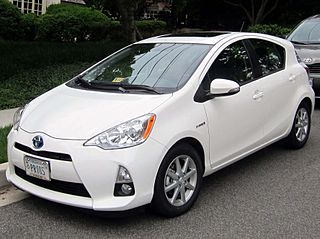
The Toyota Prius c, named the Toyota Aqua in Japan, is a full hybrid gasoline-electric subcompact/supermini hatchback manufactured and marketed by Toyota Motor Corporation. The Prius c is the third member of the Prius family, and combines the features of a Yaris-sized car with a hybrid powertrain. The Prius c is priced lower than the conventional Prius and has a higher fuel economy in city driving under United States Environmental Protection Agency test cycles. The Prius c was ranked by the EPA as the 2012 most fuel efficient compact car when plug-in electric vehicles are excluded.

The fourth-generation Toyota Prius was first shown during September 2015 in Las Vegas, and was released for retail customers in Japan on 9 December 2015. The launch in North American market occurred in January 2016, and February in Europe. Toyota expected to sell 12,000 fourth generation Prius cars a month in Japan, and to reach annual sales between 300,000 and 350,000 units.
















